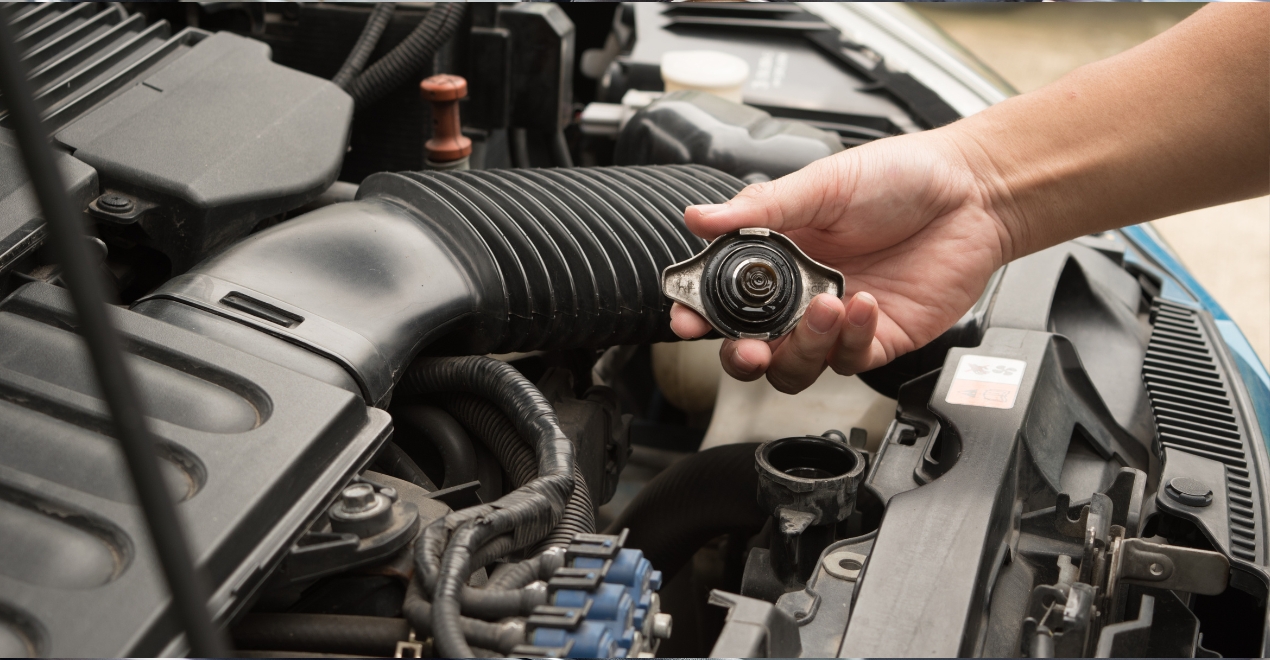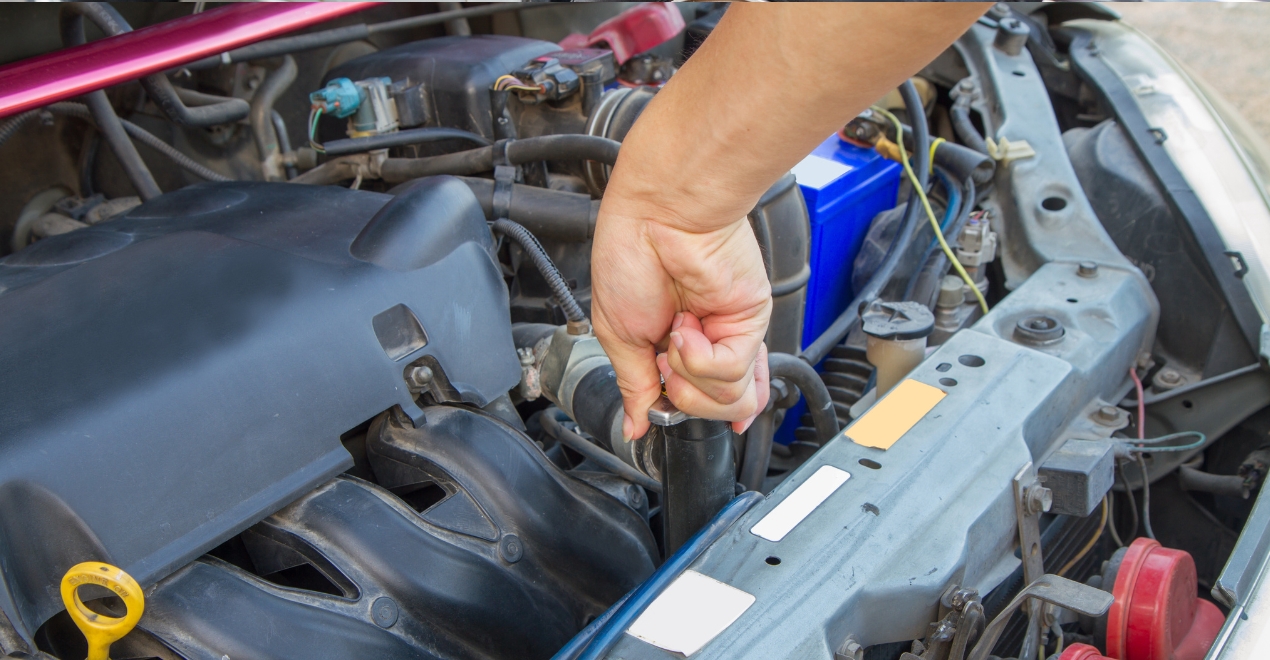Radiators play a crucial role in the cooling system of your vehicle, maintaining optimal engine temperature by dissipating heat. However, coolant leaks from the radiator can lead to engine overheating and significant damage. Identifying the causes of these leaks is essential for timely repairs and preventing costly breakdowns. In this article, we will explore five common causes of coolant leaks from radiators and discuss their symptoms, prevention, and solutions. Experiencing a coolant leak? Don’t wait! Contact Crossroads Helpline for expert assistance right at your doorstep.
Table of Contents
ToggleCorroded Radiator

One of the most prevalent causes of coolant leaks is a corroded radiator. Radiators are typically made of aluminum or plastic, both of which can be susceptible to corrosion over time. Corrosion occurs when the radiator’s material reacts with oxygen and moisture, leading to the formation of rust and other corrosive compounds. This process weakens the radiator’s structure, creating holes and cracks through which coolant can escape.
Corrosion is often exacerbated by the use of improper or old coolant. Coolants contain additives that prevent rust and corrosion, but these additives break down over time. Using an inappropriate coolant mix or neglecting to replace it regularly can accelerate the corrosion process. Additionally, external factors such as road salt, debris, and exposure to harsh weather conditions can contribute to radiator corrosion.
To prevent corrosion, it is essential to use the correct type of coolant recommended by your vehicle manufacturer and to follow the recommended coolant replacement intervals. Regularly inspecting the radiator for signs of rust and corrosion, such as discoloration or pitting, can help detect early stages of damage. If corrosion is identified, it is crucial to address it promptly by cleaning the affected area and applying a corrosion inhibitor or replacing the radiator if the damage is extensive.
Damaged Radiator Hoses
Radiator hoses are critical components of the cooling system, responsible for transporting coolant between the radiator and the engine. These hoses are typically made of rubber, which, although durable, can degrade over time due to exposure to heat, pressure, and contaminants. Damaged or worn-out radiator hoses are a common cause of coolant leaks.
There are several reasons why radiator hoses may become damaged. Heat and pressure within the cooling system can cause the rubber to deteriorate, leading to cracks, splits, or bulges. Over time, the constant expansion and contraction of the hoses due to temperature fluctuations can weaken them. Additionally, exposure to oil, grease, or other engine fluids can cause the rubber to break down.
Symptoms of damaged radiator hoses include visible cracks, swelling, or softness to the touch. You may also notice coolant puddles under the vehicle or a decrease in coolant levels. To prevent hose damage, regular inspection and maintenance are essential. Check the hoses for any signs of wear and tear, and replace them if any damage is detected. It is also crucial to ensure that the hoses are properly secured with clamps to prevent leaks at the connection points.
Faulty Radiator Cap

The radiator cap is a small but vital component of the cooling system. It maintains the correct pressure within the system, allowing the coolant to circulate properly and preventing it from boiling over. A faulty radiator cap can lead to coolant leaks by failing to maintain the necessary pressure or by allowing coolant to escape through the overflow valve.
Radiator caps can fail for several reasons. The most common cause is a worn-out seal. Over time, the rubber gasket that forms the seal can deteriorate, leading to a loss of pressure and coolant leakage. Additionally, the cap’s spring mechanism, which regulates pressure, can weaken or become stuck, preventing the cap from functioning correctly. Exposure to extreme temperatures can also cause the cap to warp or crack.
Symptoms of a faulty radiator cap include coolant leaks around the cap, engine overheating, and a collapsed radiator hose. To diagnose a faulty cap, you can perform a pressure test using a radiator cap tester. If the cap cannot hold the required pressure, it needs to be replaced. Regular inspection of the radiator cap for signs of wear or damage is crucial, and it should be replaced according to the manufacturer’s recommendations or if any issues are detected.
Radiator Damage from Debris
Radiators are located at the front of the vehicle, making them vulnerable to damage from road debris, such as stones, gravel, and other objects. Physical damage to the radiator can create punctures or dents, resulting in coolant leaks. This type of damage is often unexpected and can occur suddenly while driving.
Debris damage is more common in vehicles that frequently travel on rough or unpaved roads. Even small objects can cause significant damage if they hit the radiator with enough force. The thin metal fins and tubes that make up the radiator are particularly susceptible to punctures. Additionally, larger debris can cause more extensive damage, such as bending the radiator frame or dislodging connections.
To protect the radiator from debris damage, some vehicles are equipped with grille guards or radiator protectors. Regularly inspecting the front of the vehicle for signs of damage and cleaning any accumulated debris can help prevent issues. If damage is identified, it is crucial to address it promptly. Small punctures can sometimes be repaired with a radiator sealant, but more significant damage may require professional repair or radiator replacement.
Improper Installation or Poor Maintenance

Improper installation or poor maintenance practices can also lead to coolant leaks from the radiator. During the installation process, incorrect mounting, loose connections, or inadequate sealing can result in leaks. Similarly, neglecting regular maintenance tasks, such as checking coolant levels, inspecting hoses, and ensuring proper pressure, can contribute to radiator problems.
Improper installation can occur if the radiator is not securely mounted or if the hoses and connections are not properly attached. This can create gaps or misalignments through which coolant can escape. Additionally, over-tightening or under-tightening the radiator cap or hose clamps can lead to leaks.
Poor maintenance practices, such as failing to check coolant levels or using incorrect coolant, can exacerbate existing issues or create new ones. Regular maintenance is crucial for the cooling system’s health. This includes routine checks of coolant levels, inspecting hoses and connections for wear or damage, and ensuring that the radiator cap and other components are functioning correctly.
To prevent coolant leaks due to improper installation or poor maintenance, it is essential to follow the manufacturer’s guidelines and recommendations. If you are not confident in performing these tasks yourself, it is advisable to seek professional assistance to ensure that everything is installed and maintained correctly.
Conclusion
Coolant leaks from the radiator can be caused by various factors, including corrosion, damaged hoses, faulty radiator caps, debris damage, and improper installation or maintenance. Identifying and addressing these issues promptly is essential for maintaining the health of your vehicle’s cooling system and preventing engine overheating. Regular inspections, proper maintenance, and timely repairs can help you avoid costly breakdowns and ensure that your vehicle runs smoothly.

